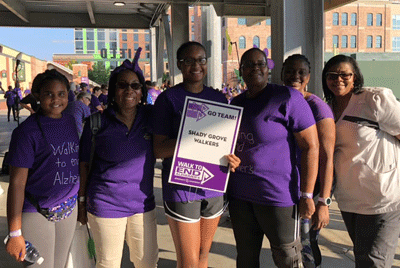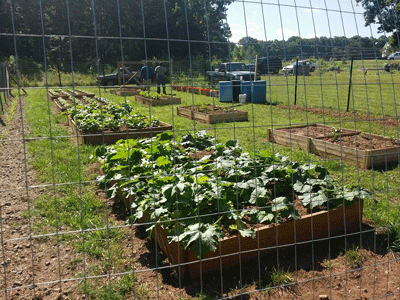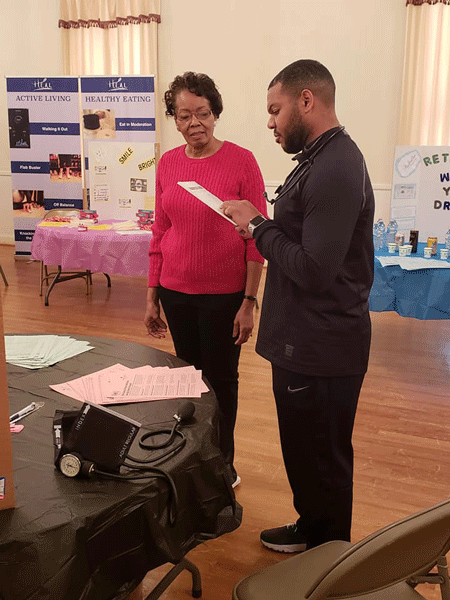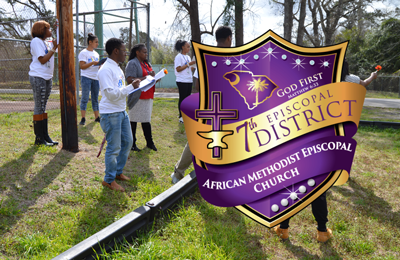
Pelzer church is making a difference in the community
 Off I-85 in the Upstate is Pelzer, SC, a small community located in a food desert. While many associate this corridor with the City of Greenville, a vibrant metropolitan area, there are communities in the county that don’t have resources like grocery stores within a reasonable distance or the transportation to get there.
Off I-85 in the Upstate is Pelzer, SC, a small community located in a food desert. While many associate this corridor with the City of Greenville, a vibrant metropolitan area, there are communities in the county that don’t have resources like grocery stores within a reasonable distance or the transportation to get there.
Pelzer is one of those rural, tight-knit communities that’s rich in family history and a church of nearly 200 members that cares deeply for others. Shady Grove Baptist Church built a church garden to nurture its members and community members. The church garden has been there for a few years now, getting bigger each planting season with enough fresh vegetables to feed more than one hundred families.
“Oh, my goodness! We have had so much. Our goal was for the food to be given to our senior citizens and people in the community who are in need. Truly, we have done that,” said Mamie Mills Reid,
Ministry Development Coordinator. “Just this year (2019) alone, we have given over 150 packages of vegetables. We had people come to the church and get what they wanted. We gave away food at two other locations. It’s just been so productive.”
It has taken a few years for the church to get the garden where it is now. With the help of technical assistance from LiveWell Greenville and grants from Gardens for Good and Eat Smart Move More South Carolina, the church family created a large garden, helped reduce food insecurity for many families, and encouraged members to adopt a healthy lifestyle, which has helped some overcome health issues.
Laying the Foundation
 Years ago, Shady Grove joined LiveWell at Worship, a focus area of LiveWell Greenville that supports congregations in creating healthier worship environments through healthy eating and active living initiatives. It was through this initiative that Shady Grove leaders started their mission to provide congregants with opportunities to make healthy choices at church.
Years ago, Shady Grove joined LiveWell at Worship, a focus area of LiveWell Greenville that supports congregations in creating healthier worship environments through healthy eating and active living initiatives. It was through this initiative that Shady Grove leaders started their mission to provide congregants with opportunities to make healthy choices at church.
They adopted policies, such as water only, no fried foods at church-hosted meals, and no saltshakers on tables. Every third Sunday, they host health screenings. Leaders have also incorporated walking into the mix by participating in the Alzheimer’s Walk.
“Our pastor invites congregants to walk with him. You would be surprised at the number of people who walk with him. We had about 35 people at the last walk,” said Mamie. “It’s for three purposes: it’s for Alzheimer’s; it’s for comradery; and it’s for the exercise.”
The Garden
 During a LiveWell Greenville meeting, Mamie and her pastor heard about a grant opportunity from Gardens for Good. They knew the church was in a food desert and they wanted to do something to help the community, so they applied in 2015 and received the grant to build raised bed gardens.
During a LiveWell Greenville meeting, Mamie and her pastor heard about a grant opportunity from Gardens for Good. They knew the church was in a food desert and they wanted to do something to help the community, so they applied in 2015 and received the grant to build raised bed gardens.
“Our people here don’t have transportation and they can’t go to the grocery stores and get fresh food but we thought it would be such an excellent thing to actually grow the fresh produce on the campus, and let our people partake of it,” said Mamie.
The garden helps provide nutritious food to the community and shows the younger people where vegetables come from. “They don’t come from Publix. They don’t come from Bi-Lo and Ingles. They come from the ground,” said Mamie. “So, it has been a wonderful teaching experience for them. My husband has taken our younger men and ladies down to the garden and they have participated in the growing.”
 Skip ahead to 2018 when Shady Grove heard about an ESMMSC grant opportunity at a LiveWell Greenville meeting. They decided to press their luck and apply for a Let’sGo 3.0 mini-grant.
Skip ahead to 2018 when Shady Grove heard about an ESMMSC grant opportunity at a LiveWell Greenville meeting. They decided to press their luck and apply for a Let’sGo 3.0 mini-grant.
“We had already started working on the garden, but this grant allowed us to purchase tools and other things that we needed,” said Mamie.
The tools made working in the garden easier. Anyone who has kept a garden, knows that a lot of time and effort goes into cultivating the soil, watering the plants, pulling weeds, and harvesting the crops. Add the hot Carolina sun in there, and that makes for a long day.
“I hope at some point we can use it as a tool with our younger generations to get more interest in gardening and healthy eating. And just getting them more interested in working,” said Janie Reid, church member and garden volunteer. “When it comes to a community garden, the Biblical saying is true: The harvest is plentiful, but the laborers are few. It’s hard to make yourself get out there in 90-degree weather and pull the Bermuda grass and water the garden.”
Changing Lives
 Eating a healthy, balanced diet and getting exercise are key elements to living a healthy life. And that’s what the LiveWell at Worship initiative and the garden have done for many church members – it’s changing lives.
Eating a healthy, balanced diet and getting exercise are key elements to living a healthy life. And that’s what the LiveWell at Worship initiative and the garden have done for many church members – it’s changing lives.
Gail Canty is a church member and benefactor not only of the garden, but also of the entire health and wellness program. She grew up eating fried foods and drinking sugar-sweetened beverages, even though she ate from the garden her father tended. As an adult, she developed Type 2 diabetes.
“It’s good that we have baked foods, more salads, and don’t go heavy on the carbs at church. It’s helped me a lot to keep my diabetes in control. With lifestyle changes, for me, I don’t have to take any medication at this point. I’m been off diabetes medication for almost a year. For me, I attribute it to eating better and walking.
“Since we are a wellness church, we do the chair exercises and other things to keep moving, and I think that helped me. It motivates me to continue those healthy rituals when I’m at home.
 “We have nurses here at church who encourage us to drink water. That motivated me to switch from juices to water. I’m not a soda drinker, but I was a juice drinker. Even at church events, they have bottled water and that helps me. If I’m going to do it here, I may as well do it at home.”
“We have nurses here at church who encourage us to drink water. That motivated me to switch from juices to water. I’m not a soda drinker, but I was a juice drinker. Even at church events, they have bottled water and that helps me. If I’m going to do it here, I may as well do it at home.”
Shady Grove Baptist Church isn’t just looking out for their own. They seek out people who aren’t members of the church to feed. “Just about everyone in this community belongs to Shady Grove, but I know that there was a disabled members’ neighbor who was not a member of this church, and she would always benefit from the garden. We have another lady who is widowed, and we make sure she gets vegetables. So, we do identify anyone who is 65 or older and we make sure they benefit from the garden,” said Janie.
The entire wellness program at Shady Grove Baptist Church seems to be a great success. From guest speakers, walks, and health screenings to the garden, fellowship, and youth engagement, the people of Shady Grove are truly making healthy change happen for their community.
“It’s such an opportunity for the church and the community to grow in a different area other than just spiritual because the spiritual makes the physical. These bodies are supposed to be tended to very well,” said Janie.

